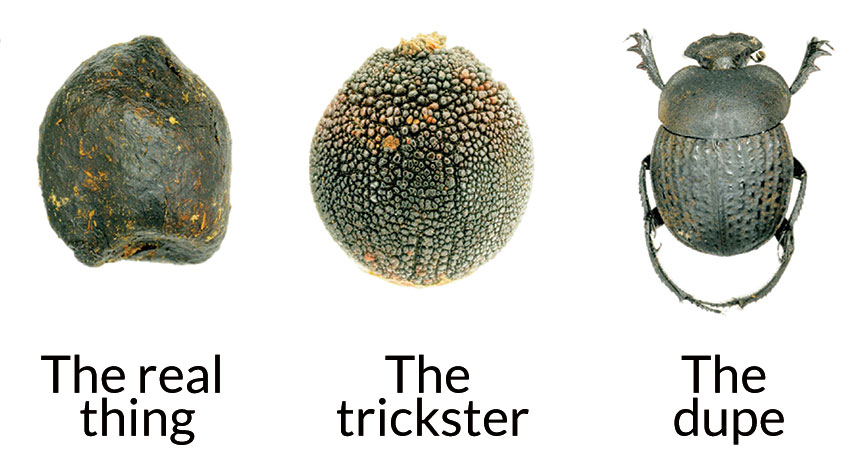Stinky seeds dupe dung beetles

ROLL PLAY The seeds of Ceratocaryum argentum (middle) closely resemble antelope dung (left) in both looks and smell, a mimicry that fools dung beetles (right) into spreading and burying the seeds.
Midgley et al/Nature Plants 2015







